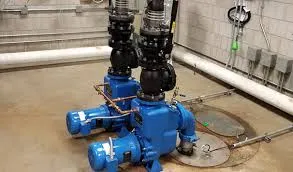English
- Afrikaans
- Albanian
- Amharic
- Arabic
- Armenian
- Azerbaijani
- Basque
- Belarusian
- Bengali
- Bosnian
- Bulgarian
- Catalan
- Cebuano
- Corsican
- Croatian
- Czech
- Danish
- Dutch
- English
- Esperanto
- Estonian
- Finnish
- French
- Frisian
- Galician
- Georgian
- German
- Greek
- Gujarati
- Haitian Creole
- hausa
- hawaiian
- Hebrew
- Hindi
- Miao
- Hungarian
- Icelandic
- igbo
- Indonesian
- irish
- Italian
- Japanese
- Javanese
- Kannada
- kazakh
- Khmer
- Rwandese
- Korean
- Kurdish
- Kyrgyz
- Lao
- Latin
- Latvian
- Lithuanian
- Luxembourgish
- Macedonian
- Malgashi
- Malay
- Malayalam
- Maltese
- Maori
- Marathi
- Mongolian
- Myanmar
- Nepali
- Norwegian
- Norwegian
- Occitan
- Pashto
- Persian
- Polish
- Portuguese
- Punjabi
- Romanian
- Russian
- Samoan
- Scottish Gaelic
- Serbian
- Sesotho
- Shona
- Sindhi
- Sinhala
- Slovak
- Slovenian
- Somali
- Spanish
- Sundanese
- Swahili
- Swedish
- Tagalog
- Tajik
- Tamil
- Tatar
- Telugu
- Thai
- Turkish
- Turkmen
- Ukrainian
- Urdu
- Uighur
- Uzbek
- Vietnamese
- Welsh
- Bantu
- Yiddish
- Yoruba
- Zulu
Telephone: +86 13120555503
Email: frank@cypump.com
Aug . 21, 2024 08:08 Back to list
Effective Strategies for Using Pumps to Eliminate Water Accumulation in Various Settings
Pumps to Remove Water An Essential Tool for Flood Management and Water Control
Water is an essential resource for life, but in excessive amounts, it can lead to devastating consequences. Flooding is a natural disaster that can occur due to heavy rainfall, rapid snowmelt, or infrastructure failures. In such situations, the ability to remove water quickly and efficiently is crucial. This is where pumps come into play. Pumps designed to remove water are vital tools in flood management, construction, and various industrial applications.
The Importance of Water Removal
During flooding, standing water can lead to significant property damage, endanger public health, and disrupt essential services. Stagnant water not only undermines structural integrity but also creates a breeding ground for mosquitoes and waterborne diseases. Thus, prompt and effective water removal is critical to mitigating flood damage and ensuring community safety.
Types of Pumps Used for Water Removal
There are several types of pumps designed specifically for removing water. Each type has its unique features and applications
1. Submersible Pumps These are electric pumps that can be submerged in water. They are commonly used in residential settings, such as basements, where water tends to accumulate. Submersible pumps are efficient and can remove large volumes of water quickly. They operate quietly and can handle clear or slightly dirty water, making them ideal for most flooding situations.
2. Trash Pumps When dealing with stormwater, construction sites, or areas with debris, trash pumps are the go-to option. These pumps can handle solids and muddy water, making them suitable for more challenging environments. They are robust and capable of moving large quantities of water, but their operation tends to be noisier than submersible pumps.
pumps to remove water

3. Diaphragm Pumps These pumps are often used in industrial settings for their ability to handle a variety of fluids, including those with particulates. They use a diaphragm to create a pumping action, which makes them versatile for both clean and contaminated water removal.
4. Centrifugal Pumps Commonly used in agriculture and drainage, centrifugal pumps create motion using rotational energy. They are great for moving large volumes of water over longer distances, such as draining fields or managing water in irrigation systems.
Application in Flood Control
In areas prone to flooding, municipal and emergency services often invest in large-scale pumping systems. These systems can be deployed rapidly to remove floodwater from streets, homes, and critical infrastructure. For instance, during hurricane events, cities may utilize truck-mounted or trailer-mounted pumps to quickly mobilize and address rising water levels.
Moreover, portable pumps are also vital for emergency response teams. They can be easily transported and set up at a moment's notice, allowing for rapid intervention in crisis situations. This flexibility is key in disaster scenarios where timing can make the difference between safety and disaster.
Conclusion
Pumps designed to remove water play an essential role in managing and mitigating the effects of flooding and water accumulation. Whether in residential areas, construction sites, or agricultural fields, these machines are indispensable. As climate change increases the frequency and intensity of storms, the reliance on effective water removal technologies will only grow. Investing in efficient pumping solutions not only protects property but also safeguards public health and enhances community resilience against the inevitable challenges posed by water. With the right equipment and timely action, we can manage water effectively, turning a potential disaster into a manageable situation.
-
ISG Series Vertical Pipeline Pump - Chi Yuan Pumps Co., LTD.|High Efficiency, Energy Saving, Low Noise
NewsJul.30,2025
-
ISG Series Vertical Pipeline Pump- Chi Yuan Pumps|High Efficiency&Low Noise
NewsJul.30,2025
-
ISG Series Vertical Pipeline Pump-Chi Yuan Pumps Co., LTD.|High Efficiency&Energy Conservation
NewsJul.30,2025
-
ISG Series Vertical Pipeline Pump - Chi Yuan Pumps Co., LTD.|Advanced Hydraulic Design&Energy-Efficient Solutions
NewsJul.30,2025
-
ISG Series Vertical Pipeline Pump - Chi Yuan Pumps Co., LTD.
NewsJul.30,2025
-
ISG Series Vertical Pipeline Pump - Chi Yuan Pumps Co., LTD.|energy-efficient fluid handling&industrial durability
NewsJul.30,2025










